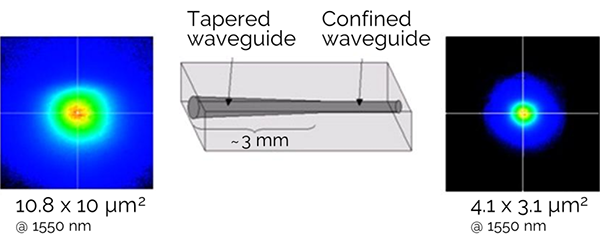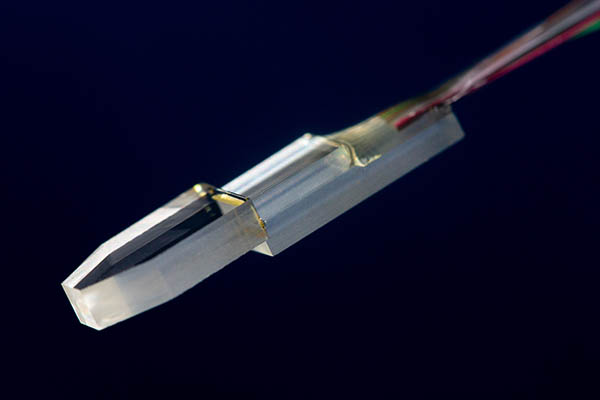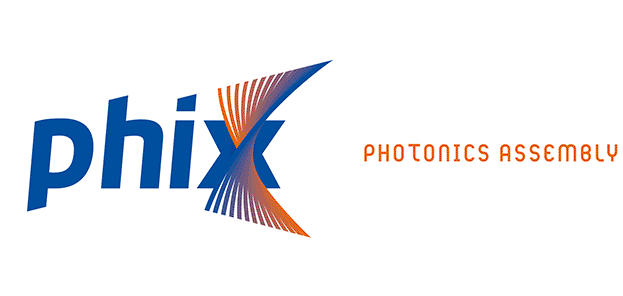
Spot Size Converting Fiber Arrays
Spot size converters (SSCs) provide an efficient coupling from arrays of optical fibers to photonic integrated circuits (PICs). They reduce the mode field using lithographically defined waveguides. PHIX offers v-groove fiber arrays with a pre-attached spot size converter. Depending on the required mode field, these can be made from ion exchanged glass (IONext, a partnership with TEEM Photonics) or Silicon Nitride (SiN, manufactured by LioniX International). These lithographic transposers can be interfaced to PICs of any common material.
Buy your spot size converting fiber array
PHIX has a dedicated webshop for fiber arrays with spot size converters. Select one of our stock items, or make your own configuration.
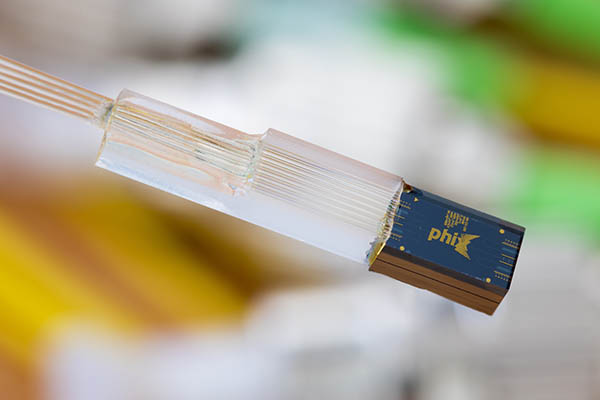
Traditional ways to reduce the mode field of an optical fiber are the use of ultra-high numerical aperture (UHNA) fibers, lensed fibers or specially tapered fibers. These solutions work well for single fibers, but they provide serious alignment challenges when applied to multi-channel configurations. Variations in core concentricity and cladding diameter would inevitably result in high losses.
Our SSCs, on the other hand, offer a low-loss multi-channel solution. They exhibit lithographic accuracy at the chip interface and therefore demonstrate a minimal waveguide to waveguide loss. PHIX has an automated process for attachment of spot size converters to our fiber arrays. This method is similar to how we assemble fiber arrays to PICs with integrated SSCs directly.
Our spot size converters can be polished under various angles, for edge or surface coupling. As an example, a 45-degree orthogonal coupling arrangement is great for wafer-scale testing of silicon photonics that have etched facets. The resulting probe is polarization maintaining, very durable, and low loss.
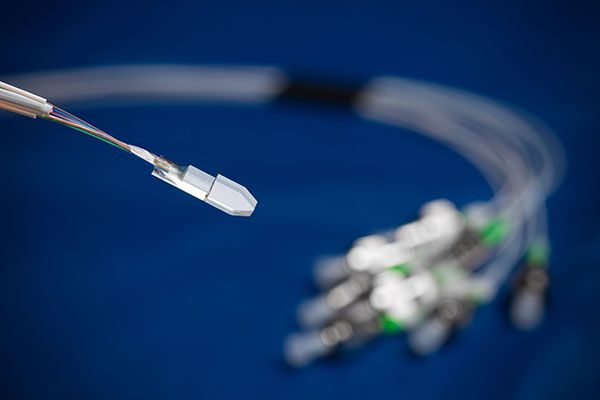
Download our SSC White Paper
Get in-depth information about the benefits and possible configurations of PHIX IONext and SiN spot size converters.
Features
- Silicon nitride (SiN) and ion exchanged glass (IONext) platforms available
- Output mode field sizes between 1.5 and 10 µm
- Conversion loss less than 1.5dB
- Polarization maintaining
- Optical pitch down to 10 µm
- 1, 4, 8, 16 and 28 channels available off the shelf
- Polishing angles for edge or surface coupling
- Large optical bandwidth, from visible light to mid-infrared
Advantages over UHNA or tapered fibers
- Higher channel counts don’t increase the complexity
- The channels are positioned with lithographic accuracy
- Cost-effective, especially for higher channel counts
